
The 25th/49th Battalion, Royal Queensland Regiment is a Reserve light infantry battalion in the Australian Army, based in the state of Queensland. Although it was officially formed in 1997, the unit can trace its lineage back to units that were formed in 1875 as part of the colonial defence force of the state of Queensland. Additionally, in order to preserve the honours and traditions of the Australian Imperial Force, the battalion is the custodian of the battle honours awarded to two battalions that were formed for service during World War I. Following the end of the war, these units were raised again as militia units. During World War II, these battalions were called upon to participate in the fighting in the Pacific. Following the end of the war, these units were disbanded although they were later re-raised as part of the Citizen Military Forces, which was the forerunner to the Australian Army Reserve that exists today.

Enoggera Barracks is an Australian Army base in the northwestern Brisbane suburb of Enoggera in Queensland. It was officially established in the early 20th century when the area was used for field training, although the area was used by military units as far back as the mid-19th century. Since then it has been developed into a modern military base, which is now home to units of the 7th and 11th Brigades as well as the headquarters of the 1st Division and the 16th Aviation Brigade.

Enoggera is a suburb of the City of Brisbane, in Queensland, Australia.
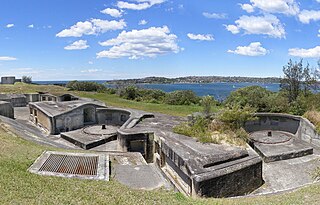
The Middle Head Fortifications is a heritage-listed former defence establishment and military fortifications and now public space located at Middle Head Road, Middle Head, Mosman in the Mosman Council local government area of New South Wales, Australia. It is also known as the Middle Head Military Fortifications or The Old Fort. The fortifications consist of the Outer Middle Head Battery located at the end of Old Fort Road, the Inner Middle Head Battery located at the end of Governors Road, and the Obelisk batteries reached by a path from the corner of Middle Head Road and Chowder Bay Road. The fortifications at Middle Head formed part of Sydney Harbour's defences. The property is owned by the NSW Office of Environment and Heritage. It was added to the New South Wales State Heritage Register on 2 April 1999.
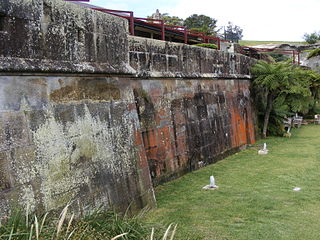
The Georges Head Battery, also called the Georges Head Military Fortifications, is a heritage-listed former military fortification located on the Georges Head on Chowder Bay Road, Georges Heights, in the suburb of Mosman, in the Mosman Council local government area of New South Wales, Australia.

The 9th Battalion, Royal Australian Regiment was a Regular light infantry battalion of the Australian Army. The battalion was raised in November 1967 and deployed to South Vietnam as part of Australia's commitment to the Vietnam War in November 1968. 9 RAR served a year-long tour of duty based out of Nui Dat conducting operations mainly in Phuoc Tuy Province as part of the 1st Australian Task Force. The Battalion returned to Australia in November 1969 and was reformed at Enoggera, Queensland in January 1970 as part of the 6th Task Force, attached to the 1st Division. On 31 November 1973, following the withdrawal of Australian forces from South Vietnam and subsequent reduction of the Australian Army, the battalion was linked with the 8th Battalion, Royal Australian Regiment to form the 8th/9th Battalion, Royal Australian Regiment.
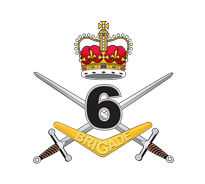
The 6th Combat Support Brigade is an Australian Army brigade. First formed in 1912 as a Militia formation to provide training under the compulsory training scheme, the brigade was re-raised during the First World War as an infantry unit of the all volunteer Australian Imperial Force. It subsequently served at Gallipoli and in France and Belgium on the Western Front. In the 1920s, as part of a reorganisation of the Australian Army, it became part of the 3rd Military District of the Citizens Military Force, encompassing units from Victoria and South Australia. In 1991, it became part of the Ready Reserve Scheme, based at Enoggera Barracks, in Brisbane, Queensland, before being disbanded in 1996 when the scheme was discontinued. The brigade was re-raised on 1 March 2010 to oversee the Army's command support and intelligence, surveillance, target acquisition and reconnaissance units.
Victoria Barracks is an Australian Army base in the Brisbane suburb of Petrie Terrace in Queensland.
Thomas Pye was an Australian architect. He worked for over 33 years in the Public Works Department in Queensland. Pye contributed significantly to major buildings including the completion of the Public Offices and Rockhampton Customs House, as well as the design for the Lands and Survey Offices. He was responsible for the heightened expectations which produced the best public buildings yet seen in Queensland.

The Enoggera Memorial Hall, formerly the Enoggera Memorial Hall and School of Arts, is World War I memorial hall at 349 Wardell Street, Enoggera, City of Brisbane, Queensland, Australia. It currently houses the historical collection of the Enoggera and Districts Historical Society and is otherwise used as a hall for hire. The building was designed by former Queensland Government Architect, Colonel Thomas Pye, and was opened in November 1925. It is listed on the Brisbane Heritage Register.

Irwin Barracks is an Australian Army military base located in Karrakatta, a suburb of Perth, Western Australia. It occupies a 62-hectare (150-acre) site on the western side of the Fremantle railway line.
The 11th Engineer Regiment(11ER) is an Australian Army Reserve engineer regiment trained for sapper/combat engineer and construction engineer operations. While 11 ER was formed on 1 January 2014 as a result of recent Australian Army modernisation efforts, 11 ER's lineage is traced back to early Queensland volunteer engineer units as early as 1879. In 1916, 11th Field Company was formed and during World War I, this unit was renowned for action during the Battle of the Somme and the Hindenburg Line. During World War II, it fought the Japanese during the Kokoda Track campaign and on Bougainville Island. The Regiment's Headquarters is located at Gallipoli Barracks in Brisbane, Queensland with subunits located across Queensland. 11ER is part of 11th Brigade, attached to Forces Command.
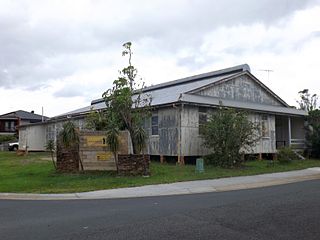
Annerley Army Reserve Depot is a heritage-listed barracks at 158 Dudley Street, Annerley, City of Brisbane, Queensland, Australia. It was built from 1914 to 1954. It was added to the Queensland Heritage Register on 7 February 2005.
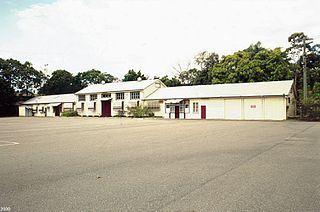
Gona Barracks is a heritage-listed barracks at 3, 7,12, 25 & 26 Gona Parade, Kelvin Grove, City of Brisbane, Queensland, Australia. It was built from c. 1914 to 1960s. It is also known as Kelvin Grove Military Reserve and Kelvin Grove Training Area. It was added to the Queensland Heritage Register on 7 February 2005.

The Drill Shed is a heritage-listed drill shed at 342 Water Street, Fortitude Valley, City of Brisbane, Queensland, Australia. It was designed by John James Clark and built in the 1880s by William Watson. It was added to the Queensland Heritage Register on 2 December 2011.
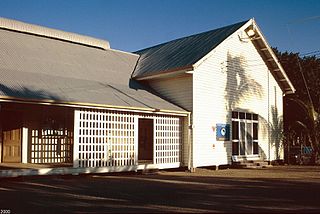
North Ward Defence Complex is a heritage-listed barracks at 46 Oxley Street, North Ward, City of Townsville, Queensland, Australia. It was built from 1885 to c. 1942. It is also known as 11 Brigade Administration Support Battalion Headquarters Company and Oxley Street Defence site. It was added to the Queensland Heritage Register on 25 August 2006.

The Small Arms Magazine is a heritage-listed former military installation at Murray Avenue, Gallipolli Barracks, Enoggera, Brisbane, Queensland, Australia. It was added to the Australian Commonwealth Heritage List on 22 June 2004.

Enoggera Magazine Complex is a heritage-listed military installation at Inwood Road, Gallipoli Barracks, Enoggera, Brisbane, Queensland, Australia. It was added to the Australian Commonwealth Heritage List on 22 June 2004.

Green Hill Fort is a heritage-listed fortification at Chester Street, Thursday Island in the Torres Strait, Queensland, Australia. The fort is important in Australian military history as a strategic coastal defence installation in the period of transition from British to Australian responsibility for defence. The 1885 confrontation between Britain and Russia, which almost resulted in open conflict, galvanised the Australian colonies to jointly fund construction of the fortifications, and these represent an important and uncommon instance of pre-Federation Colonial cooperation on defence in the "national" interest. The fort was added to the Australian Commonwealth Heritage List on 28 May 2008.

Remount Complex is a heritage-listed former military installation at Wynter Road, Gallipoli Barracks, Enoggera, Queensland, Australia. The former Remount Complex is an important group of early twentieth century Australian Government defence buildings at the former Enoggera Army Camp, now known as Gallipoli Barracks. A group of five buildings, the Remount Section is a significant link to a famous, almost legendary, tradition of the Australian military: mounted units such as the Light Horse.It was added to the Australian Commonwealth Heritage List on 22 June 2004.














